Volume 4, Issue 2
Displaying 1-8 of 8 articles from this issue
- |<
- <
- 1
- >
- >|
-
2000 Volume 4 Issue 2 Pages 59-66
Published: December 20, 2000
Released on J-STAGE: May 31, 2010
Download PDF (5730K) -
2000 Volume 4 Issue 2 Pages 67-70
Published: December 20, 2000
Released on J-STAGE: May 31, 2010
Download PDF (607K) -
2000 Volume 4 Issue 2 Pages 71-79
Published: December 20, 2000
Released on J-STAGE: October 27, 2010
Download PDF (960K) -
2000 Volume 4 Issue 2 Pages 81-85
Published: December 20, 2000
Released on J-STAGE: May 31, 2010
Download PDF (727K) -
2000 Volume 4 Issue 2 Pages 87-89
Published: December 20, 2000
Released on J-STAGE: May 31, 2010
Download PDF (332K) -
2000 Volume 4 Issue 2 Pages 91-97
Published: December 20, 2000
Released on J-STAGE: May 31, 2010
Download PDF (975K) -
2000 Volume 4 Issue 2 Pages 99-102
Published: December 20, 2000
Released on J-STAGE: May 31, 2010
Download PDF (3024K) -
2000 Volume 4 Issue 2 Pages 103-104
Published: December 20, 2000
Released on J-STAGE: May 31, 2010
Download PDF (206K)
- |<
- <
- 1
- >
- >|
